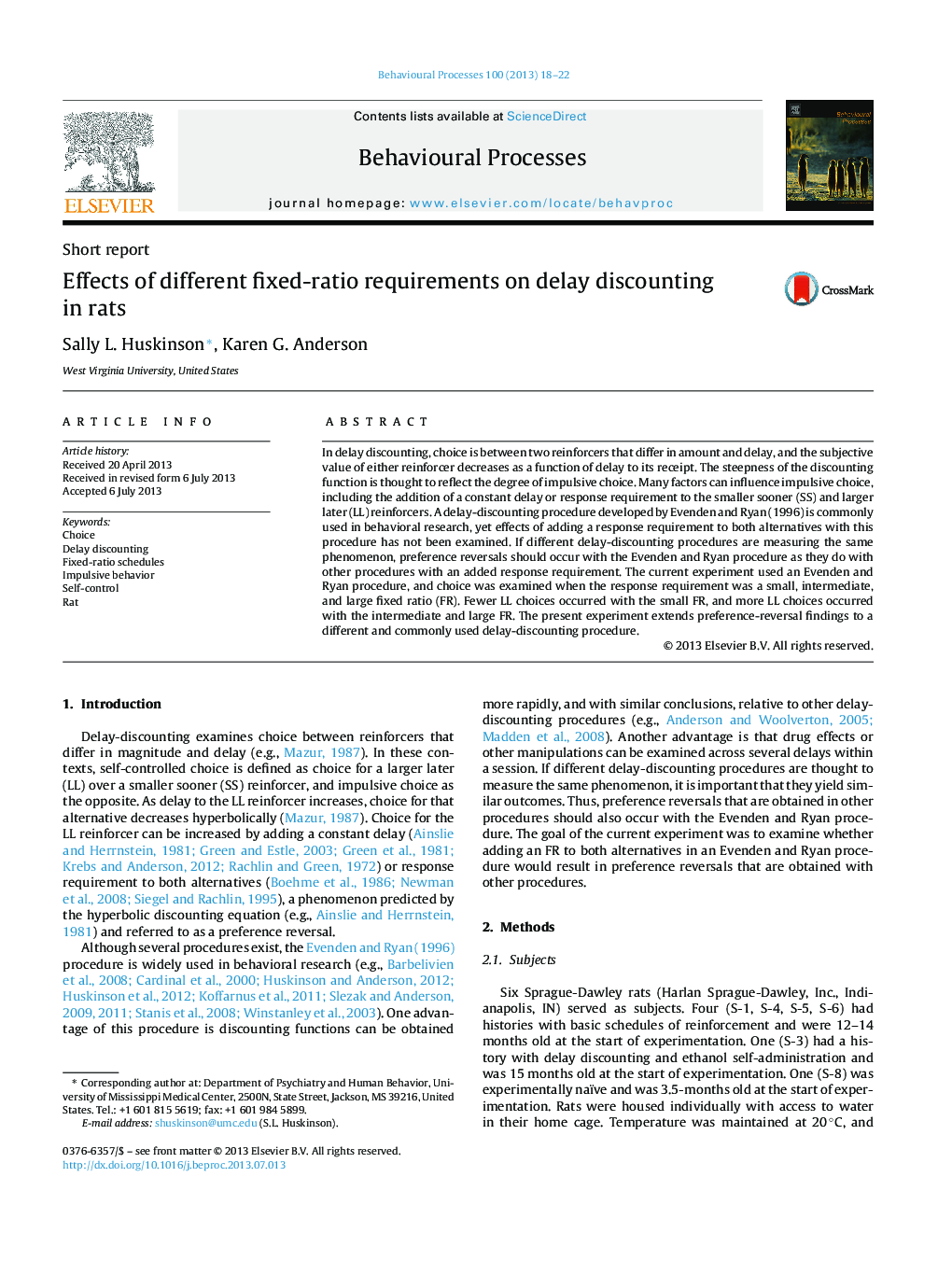| Article ID | Journal | Published Year | Pages | File Type |
|---|---|---|---|---|
| 8497400 | Behavioural Processes | 2013 | 5 Pages |
Abstract
In delay discounting, choice is between two reinforcers that differ in amount and delay, and the subjective value of either reinforcer decreases as a function of delay to its receipt. The steepness of the discounting function is thought to reflect the degree of impulsive choice. Many factors can influence impulsive choice, including the addition of a constant delay or response requirement to the smaller sooner (SS) and larger later (LL) reinforcers. A delay-discounting procedure developed by Evenden and Ryan (1996) is commonly used in behavioral research, yet effects of adding a response requirement to both alternatives with this procedure has not been examined. If different delay-discounting procedures are measuring the same phenomenon, preference reversals should occur with the Evenden and Ryan procedure as they do with other procedures with an added response requirement. The current experiment used an Evenden and Ryan procedure, and choice was examined when the response requirement was a small, intermediate, and large fixed ratio (FR). Fewer LL choices occurred with the small FR, and more LL choices occurred with the intermediate and large FR. The present experiment extends preference-reversal findings to a different and commonly used delay-discounting procedure.
Related Topics
Life Sciences
Agricultural and Biological Sciences
Animal Science and Zoology
Authors
Sally L. Huskinson, Karen G. Anderson,
